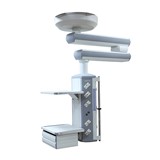Commissioned in 2009 to inform safety and quality improvement, this unique research applied hospitality and broader management principles to better understand service quality and communication in ED waiting rooms.
Thirty recommendations are the centrepiece of the report. They cover key issues such as staff communication and cultural awareness, human resources and staffing, ED design and environment, ED processes and monitoring the waiting room, triage, signs and posters in the waiting room, community awareness and knowledge, patients’ and carers’ information and safety and security.
Two earlier reports, the ‘Nile Inquiry’ and the ‘Hughes-Walters report’, had raised concerns that there was a perception that people in the waiting room were not yet considered ‘patients‘. These same clients however believed that they were in fact being cared for, as they were ‘in the hospital’.
"Our team set out to examine the question - what actually happens during that waiting period, before the person goes from the waiting room into the ED? Is not the waiting room in reality a part of the ED, not just a prelude?" Professor John Jenkins, the lead researcher, said.
The team of eight SCU researchers spent 260 hours observing four ED waiting rooms, and conducted interviews with 66 staff. The hospitals involved in the report are confidential, but were a mix of metropolitan and regional.
The researchers emphasised the commitment by emergency department staff, who are often faced with extremely difficult working conditions. In noting this, the researchers sought to bring recommendations from their background in the hospitality Industry that could improve the patient experience in all EDs.
"Many of the problems we encountered were not news to patients and families who attended these EDs," Professor Jenkins said.
"For instance, there were many times when the ED workload meant that no staff actually checked the waiting room. In some it was not possible for staff to actually see patients in the waiting room.
"Some waiting rooms were uncomfortable places, either due to the temperature of the room, or inadequate seating. Not surprisingly we observed communication problems between patients and staff. Expectations of patients and families about the wait before being seen added to these tensions."
The recommendations have provided a framework for ED clinicians and managers to consider in the ongoing improvement work occurring across EDs throughout the State.
The research team noted: "It is important to exercise caution in interpreting our findings, due to the limited sampling of hospitals. Our very detailed methods and analyses, however, reveal - even within a small sample – that there is extraordinary diversity of service and infrastructure in waiting rooms. Our recommendations urge, among other things, better designed, resourced and managed waiting rooms to meet the diverse needs of patients, those accompanying patients, and staff."
This work was commissioned by the CEC and auspiced under the ‘Partnering with Patients’ program.
"We note that the CEC has considered our recommendations and presented an extensive list of relevant responses. We acknowledge this support and the contribution of CEC staff to the study," Professor Jenkins said.
The report was released to the health system for consultation in August 2011.
Professor Clifford Hughes, CEO of the Clinical Excellence Commission said: "A number of organisations including the CEC, the Agency for Clinical Innovation, the Emergency Care Institute and Local Health Districts have been using, and are continuing to use, the report to inform future strategies for ED waiting rooms and patient care.
"In our ‘hospitals and the ‘hospitality’ industry, there are more similarities and shared lessons than just names. The insights from the team at the School of Tourism and Hospitality Management at SCU will undoubtedly influence practice in the busiest areas of our hospitals."




-160x160-state_article-rel-cat.png)


